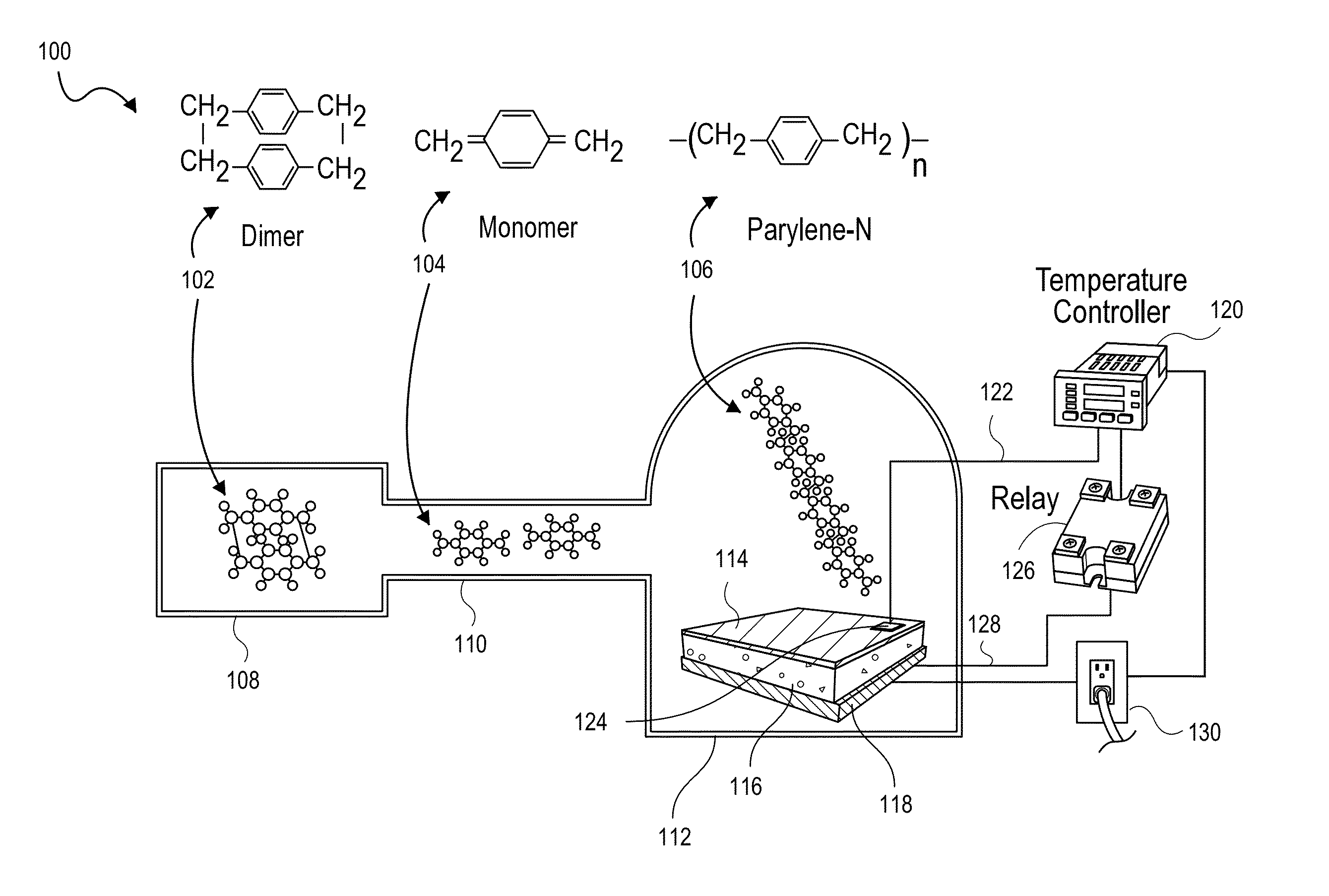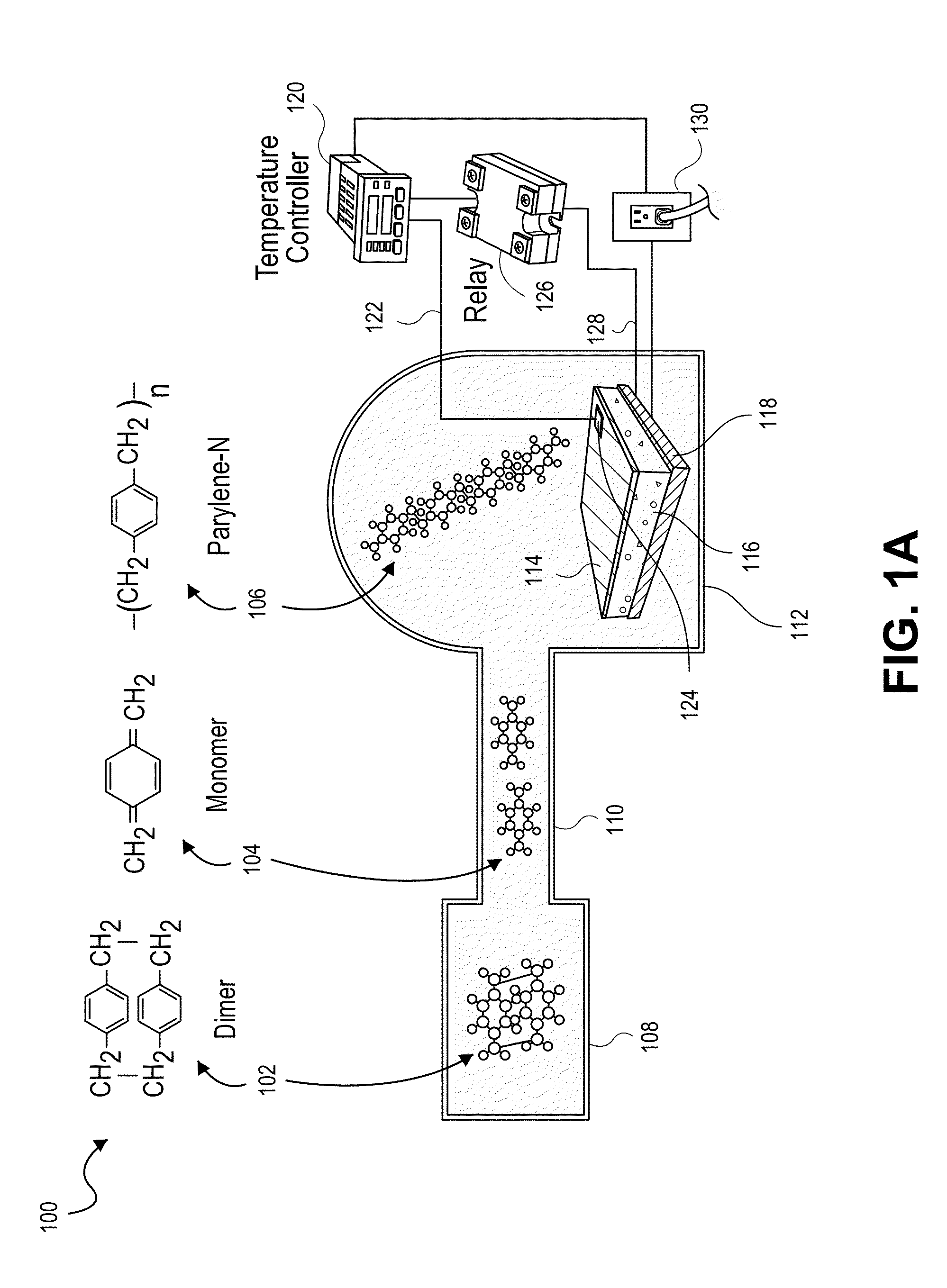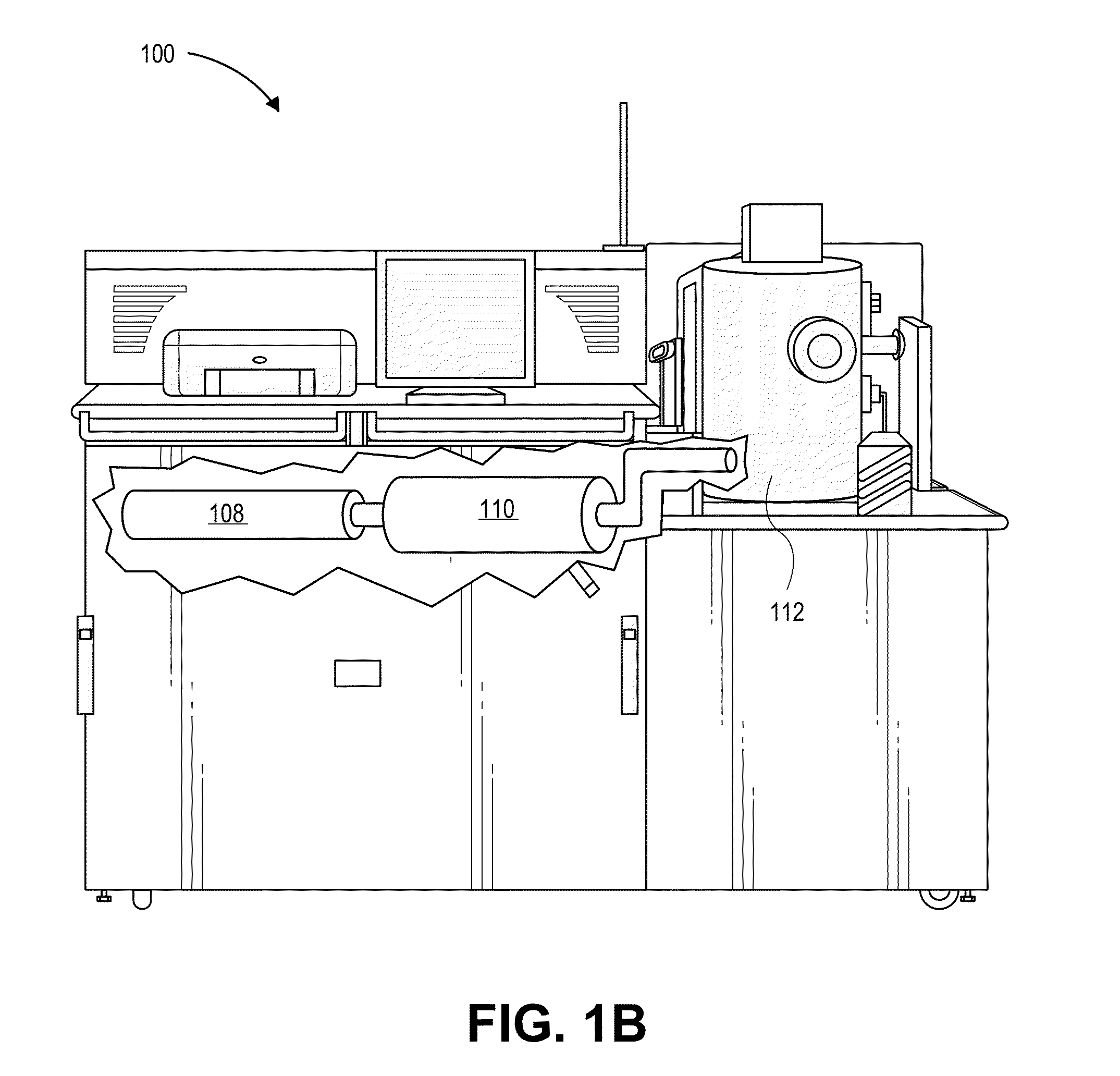In-situ heated deposition of parylene to enhance pore penetration into silicone
a parylene and silicone technology, applied in the field of plastics manufacturing, can solve the problems of less uniform deposit of parylene d than that of parylene c, and the inability of parylene to adhere well to some materials
- Summary
- Abstract
- Description
- Claims
- Application Information
AI Technical Summary
Benefits of technology
Problems solved by technology
Method used
Image
Examples
Embodiment Construction
[0042]In-situ heated deposition is hereby demonstrated to improve parylene-on-parylene adhesion and has led to the thorough investigation of deposition temperature effects on thermal, structural and mechanical properties of parylene C. This pore-sealing feature of parylene deposition can be used to coat porous materials for the technical advantage of reducing gas or moisture permeation.
[0043]For example, the methods can be used to create parylene-caulked PDMS for a long-term pneumatic balloon actuator. As another example, parylene coatings onto porous ultralow-k interlayer dielectrics can be used to prevent precursor penetration during subsequent metallorganic deposition.
[0044]In experimenting with these novel manufacturing methods, the inventors hypothesize that the surface mobility of parylene monomer is strongly dependent on temperature and have empirically demonstrated parylene's enhanced pore sealing capability at elevated deposition temperatures.
[0045]Standard teachings in the...
PUM
| Property | Measurement | Unit |
|---|---|---|
| Temperature | aaaaa | aaaaa |
| Temperature | aaaaa | aaaaa |
| Temperature | aaaaa | aaaaa |
Abstract
Description
Claims
Application Information
 Login to View More
Login to View More - R&D
- Intellectual Property
- Life Sciences
- Materials
- Tech Scout
- Unparalleled Data Quality
- Higher Quality Content
- 60% Fewer Hallucinations
Browse by: Latest US Patents, China's latest patents, Technical Efficacy Thesaurus, Application Domain, Technology Topic, Popular Technical Reports.
© 2025 PatSnap. All rights reserved.Legal|Privacy policy|Modern Slavery Act Transparency Statement|Sitemap|About US| Contact US: help@patsnap.com



